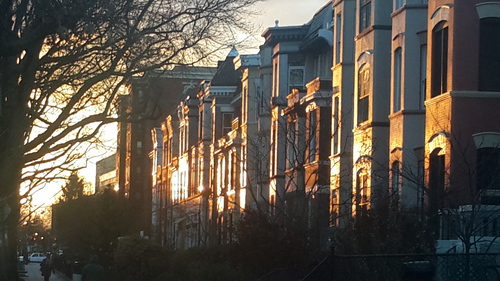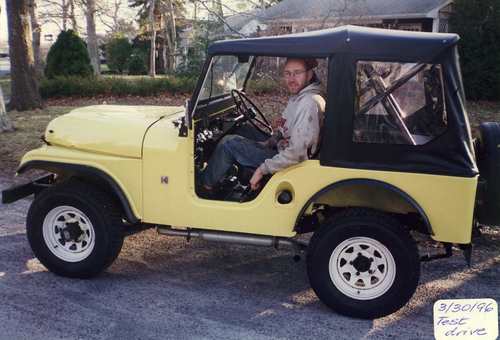
In my 49 years on earth, I've learned only one thing with total certainty: it's that any bad day can be cured by a drive into wild spaces in a classic Jeep. This fact has accompanied me through life. Pretty sure my dad taught it to me. If so, he was right.
This is the story of my Jeep. Not any Jeep, mind you: it joined the family before I did. I laugh when I see ads for "vintage" Jeep Wranglers that date back to the early 2000s. Mine was a 1968, older than me. Before the Wrangler was the AMC and before that was the Kaiser, only one short generation removed from the old Willys that had served hard time in World War II. And it was still largely unchanged in design. The Kaiser was still so simple you could airdrop it to troops in a palletized container and have them assemble it in the field. In the winter you froze, in the summer you cooked. If it rained, you stood a decent chance of getting wet. But it was a Jeep: worth it!
Continue reading "The '68 Jeep"
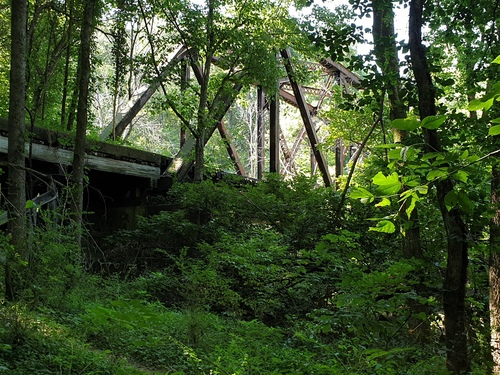
Back when North Carolina was called the Rip Van Winkle state, asleep while
industry raged on all sides, local industrialists shared a vision of prosperity
that only rail builders could usher in. It was the late 1800s, just four
decades after the cease of Civil War hostilities, and North Carolina was
suffering. But before the century would end, a network of steel rail would connect
North Carolina's textile mills and tobacco farms to the markets of Virginia
and harbors on the Atlantic. And there they would stay for about a century
before consolidation, truck traffic, and changing interstate markets would
make some of them superfluous.
Rail lines are tough to make disappear, though. So if you know where to
look, you can still find their bones slumbering under forests. And Lord
they are beautiful.
Continue reading "Slumbering Giants: the End of Rail"
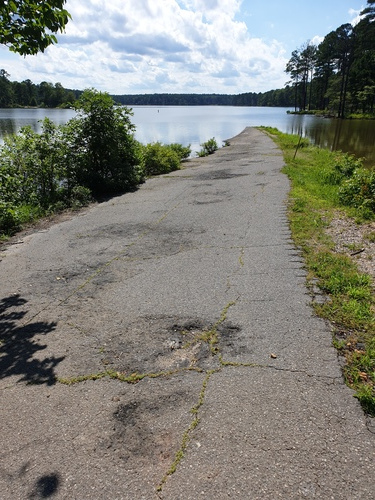
Nothing gets the pulse racing like escaping from the world we're living in
now, and discovering the worlds that lived before us: it's a reminder that
nothing lasts forever, not even this.
North Carolina's Haw and New Hope River valleys were formerly
prone to horrific flooding. The hurricane of 1945 was one of just
many hurricanes that laid siege to what was already a poor valley,
putting it under water. The US Army Corps of Engineers came up with a
plan to flood it permanently, offering a mechanism of flood control
and providing hydropower for electrification of the region. When it
was done, Lake B Everett Jordan had become a permanent fixture on the
Piedmont landscape.
Continue reading "The End of the Road"

In the clarity of hindsight, I perceive I didn't find Nunn Mountain as much as I succumbed to its charms:
Quiet, verdant whispers slip through, borne in the soft breezes of late summer,
Shadows are suspended from the bright needles of Loblolly Pines.
Continue reading "Pilgrim on Nunn Mountain"

The only thing better than a pilot's license is surely a friend with a pilot's license. And in 2016, such a friend with a big heart, and an empty seat in his Cessna, offered to take me on a ride I'll never forget.
Matt was flying Cessnas for a small company in Uganda. "Take me along some day if you've got space for me," I joked one day. But it was half-hearted and a joke. So imagine when one day he called me up and offered me a ride in exchange for some help loading up a guy who had broken his leg in the rural bush of northern Uganda. I could scarcely meet him at the aerodrome fast enough.
Continue reading "The Bush Pilot"
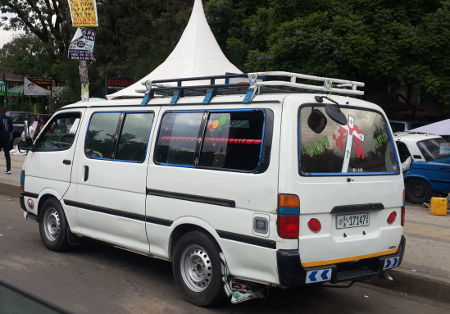
The more time I spend in Ethiopia, the more I like it, and the more it draws me in. Even after a decade in sub-Saharan Africa, this is something new and different. And though Ethiopia outside the capital is truly a different world, Addis reminds me an awful lot of Managua, another place I called home for many years.
Maybe it's that familiarity that led me so effortlessly into adventure.
I had traveled across town for a meeting, and back out on the street found the local bank machine wouldn't accept my card; stupidly, I'd set out in the morning without drawing some cash at the hotel. And out on the street I had no access to wifi, so my phone was useless to call for a ride. I hailed a few cabs, all of whom roundly refused to carry me for the cash I had on hand. What to do?
Continue reading "The bus to Kazancis"
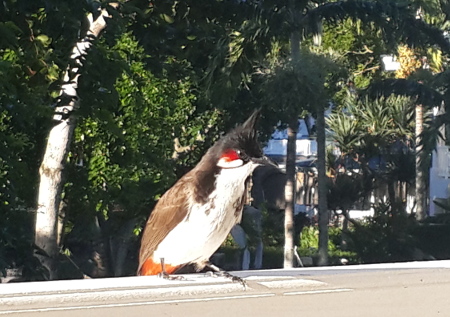
We left Mauritius in December of 2010, thinking it was as far as we'd
ever traveled, and that we were leaving a piece of paradise, never to
return. So I was shocked to find myself there again only eight years later.
It's as far as I remember, but when you reach a destination at the end of
many, individual jumps, it seems farther.
Continue reading "Mynahs by Morne"
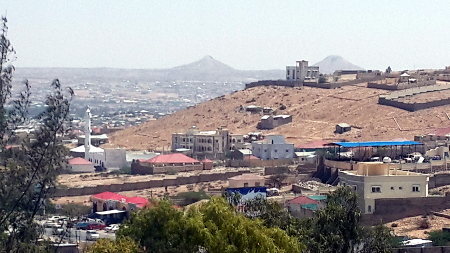
It must have been around late 2014 after a full nine years in West
Africa: I was deathly bored of the continuous struggle to invest in the
governments of poor places while remaining infinitely wary for the fraud and
misuse that comes with the pleasure of spending another people's money. I
desperately wanted to leave the donor business. "Also," I told
Ericka, " if I don't get out of this sector, some day I'm going to find
myself on a plane to Somalia or something."
So the irony wasn't lost on me when I boarded a plane for Hargeisa just a
few years later.
Continue reading "The Sands of Hargeisa"
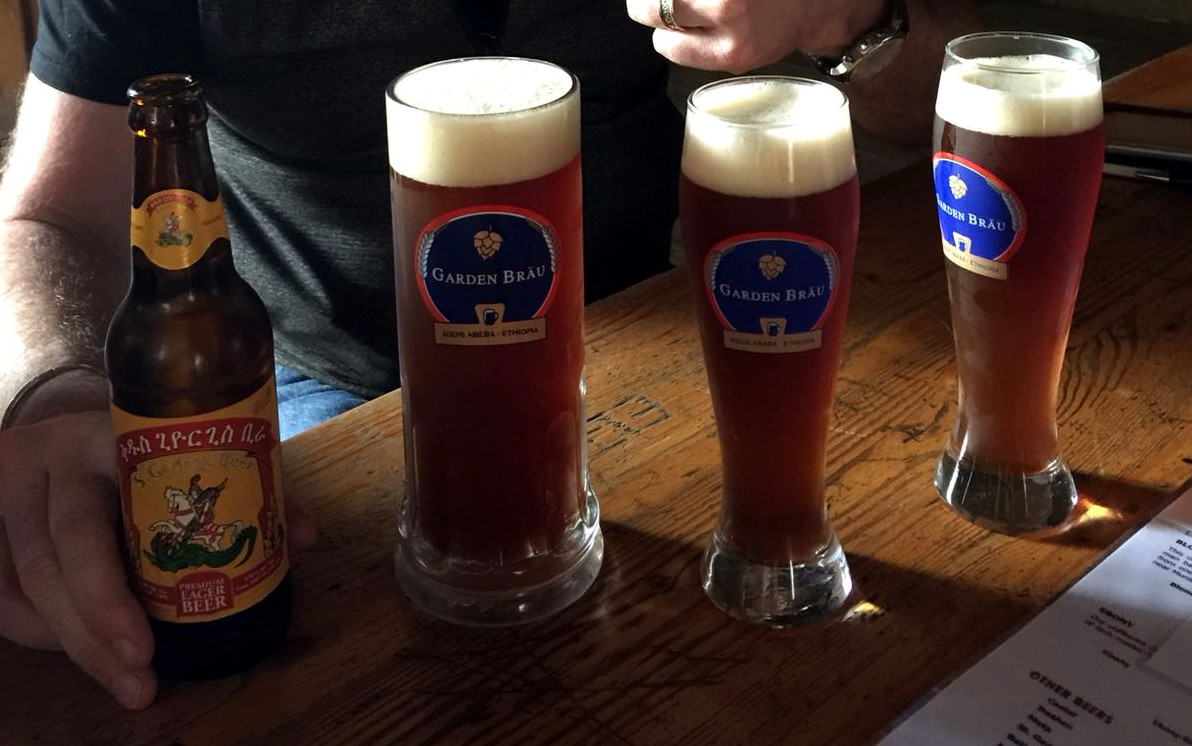
I'd been predisposed to hate Addis. I knew the hills outside of Addis
were green and beautiful, and a friend who had worked there frequently told me
Ethiopia itself was wonderously beautiful. "But not Addis," he
added. Fair enough, few emerging market capitals are what you would call
lovely. But a popular travel writer characterised the place as filthy and
rutted and festering, and that's the image I braced myself for as I arrived.
Instead, Addis was pretty interesting.
Continue reading "Addis Ababa"
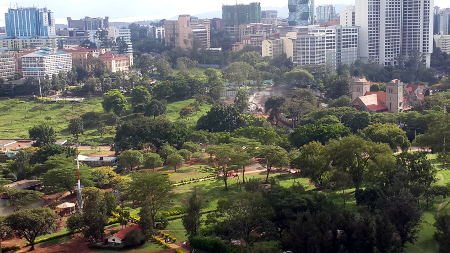
I first visited Nairobi in 2007 with Ericka. Coming off a week-long safari, we needed to find someplace to spend the night before flying onward, and found a mid-range hotel on the edge of town closest to the airport, where we spent an awful, noisy night listening to the adjacent bus terminal and sweating on questionable sheets. Morning came soon enough, and we hoofed it out to Jomo Kenyatta airport and got on with our lives. No metropolitan center can compete with the magic of one's first visit to the Masai Mara or Samburu National Park, but Nairobi was a necessary evil to that trip, not a destination.
Two years later we passed through on the way to the Seychelles, and stayed with friends in an upscale, gated community burgeoning with diplomats and expat aid workers. The houses were lovely, with manicured green gardens sparkling under the tropical sun, and their shaded interiors whispered of hard woods and cool evenings. But the traffic we experienced getting across town to our friends' house! It was shocking.
I found myself in Kenya a third time ... and then again ...
Continue reading "Nairobi"
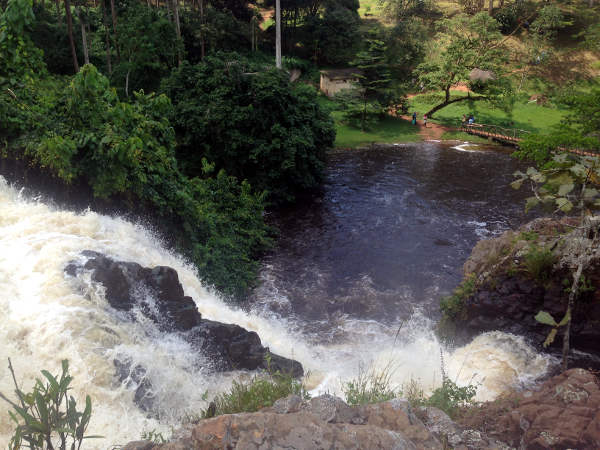
You could find it halfway between Kampala (the capital and our
home), and Jinja, the famed source of the Nile: Ssezibwa Falls, a
lovely little waterfall and an easy day-trip out of town. So
Christmas morning after the kids had opened presents, we bundled
children and dog into the car and sauntered out of town to check it
out.
Turning off the highway, we followed a dirt track through fields of
sugar cane, down across an irrigation channel, and further down into a
little forest, a grove of Eucalyptus and hardwoods, a glade I suppose.
And we saw it. What a gorgeous waterfall. The water appeared out of
nowhere, rounding a last-minute bend in the river. And then it
dropped from about 100 feet, churned in a fast spinning pool, and
poured forth in a stream that immediately divided to swallow both
sides of a little island. The two streams rejoined a few dozen meters
afterwards in a shady, little forested spot, and then disappeared out
of sight as it headed down to Lake Victoria.
Continue reading "Ssezibwa Falls"
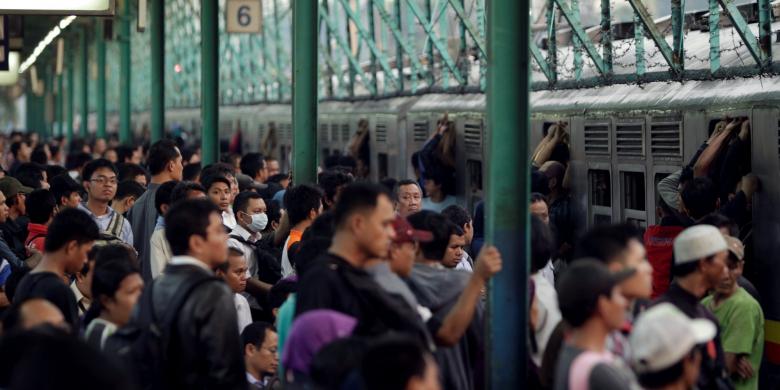
As you travel through life and across the Earth, some things stick
with you, and some things are lost. I lived and worked in Boston for
two years and can't remember a single street name. I studied at
Cornell for four years and can't remember the names of buildings I
visited every day. But I remember this instant vividly, and think
about it frequently. It has become a part of me.
I'd traveled to Indonesia alone, and had landed only hours ago,
toting nothing but a huge, wheeled trunk carrying my belongings, and a
camper's backpack with the rest. I spoke good Bahasa Indonesia
but was a fish out of water otherwise: disoriented, traveling for the
first time ever, and in a country so non-Western as to be totally
confusing in ways you'd never experience on your first excursion to a
place like Spain. I'd gotten myself from the airport to the train
station only to be told I couldn't travel with the trunk, which was
too heavy and would block the aisle.1 They gave me the
address of a freight forwarder, and suggested I take the Jakarta inner
city rail across town to get there. OK ...
Continue reading "The Jakarta Train"
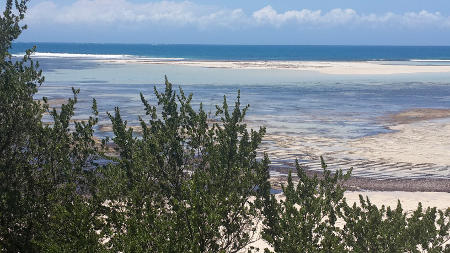
Off the famed Swahili coast are a number of sand-swept islands and
islets that provide the gorgeous, natural backdrop for so many adoring
"Swahili Style" coffee table books. You'd know Swahili
style if you saw it: rough-hewn furniture from dark woods like Moringa
and ebony, a touch of safari in the canvas accoutrements, bits of
colored glass, and a color scheme composed of whites, turqouise, and
dark, wooden colors. And if you're spending your days at the business
end of a computer in a modern, American office, the Swahili coast
really is a change in lifestyle that can repair a bruised soul.
If you've been living in Africa for a decade though, Swahili style
starts to seem a little put on, a little "created" a little
"invented for the tourists".
Continue reading "Bongoyo Island"
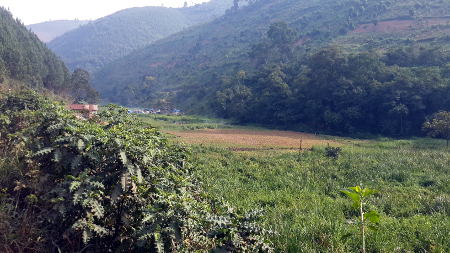
A few places remain on earth where the beauty of nature rises to catch the
casual eye, but avoids the gaze of the rampaging tourist keen on seeing
"the sights" Kabale is such a place, and I count myself as
fortunate for having had the rare and surprising opportunity to spend some
time there in 2015.
Eight hours west of Kampala, nestled just over the line from Rwanda, and
not all that far from the famed Rwenzori mountains that draw the masses in
search of gorillas, Kabale is a quiet, farming town nestled at the southern
tip of a valley carved millenia ago by glaciers. Unless you had reason to
stop there, you'd almost certainly whiz right by, on your way to a border
crossing, or a trekking adventure with reclusive animals. And you'd miss
something lovely.
The land's natural fertility and the rich peat soils give up vegetables
of all sorts here, from Irish potatoes to cabbage and carrots, and the
morning sun chases the mist off the chilly fields before the equatorial heat
seeps in. But the temperature remains chilly here, especially at night:
you're well over a thousand meters up here, nestled in the thin branches of
pines and surrounded by bird song.
These days I visit lovely little, quiet corners of the earth, and imagine
what a lovely site it would be for a Peace Corps volunteer, arriving with
two duffles full of books, and a pouch containing pen and ink: watch the
smoke curl from the wood stoves, watch the stars wheel over the horizon, sit
back and marvel at the wonder in God's limitless universe.





